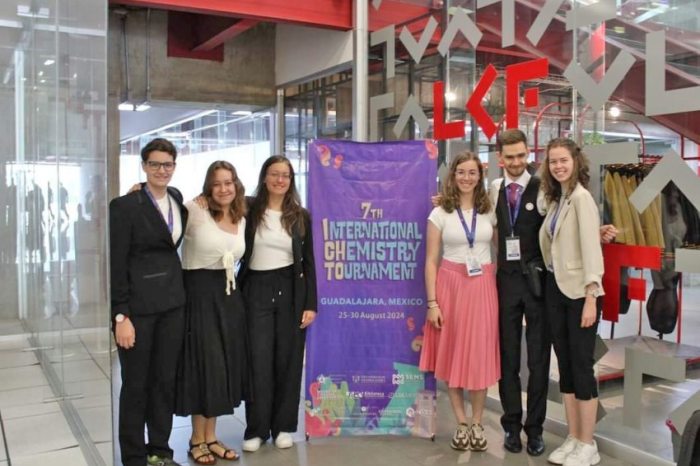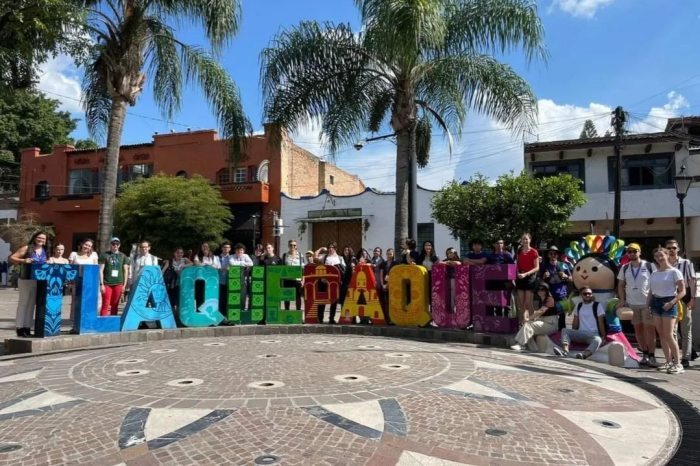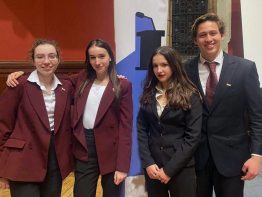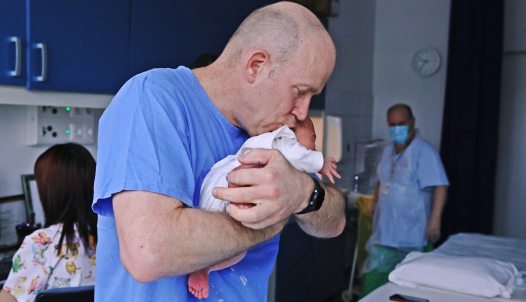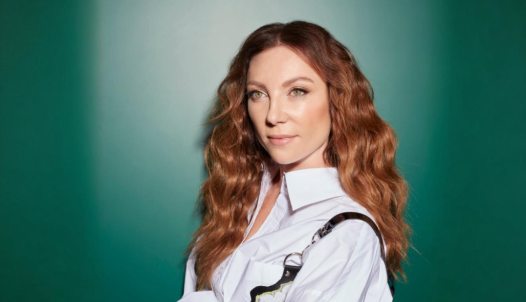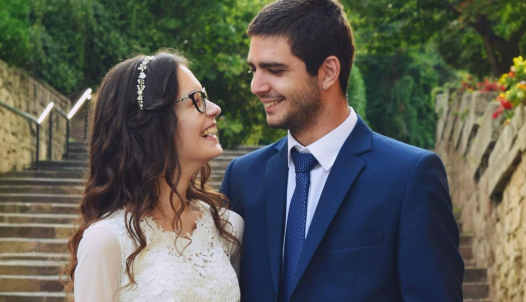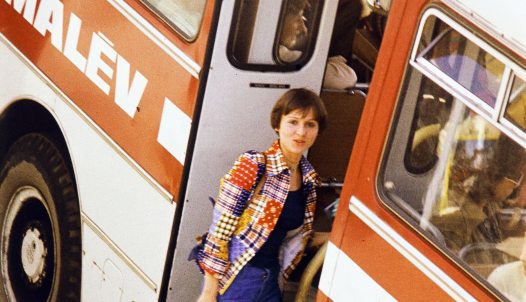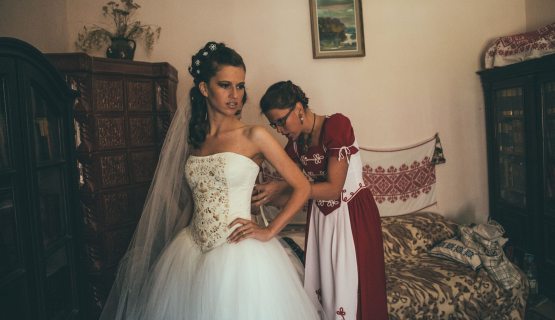A salt that shrinks volume – the Hungarian student team broke a record at the International Chemistry Tournament
The Hungarian student team defended its title at the 7th International Chemistry Tournament in Mexico at the end of August. Out of the six high-school students, some started university this September. We talked to the team captain, 19-year-old Hanna Járay – who lives in Pécs and is studying to become a physician-scientist – about the euphoria of victory, chemistry beyond covalent bond, and Mexican embroidery samples.
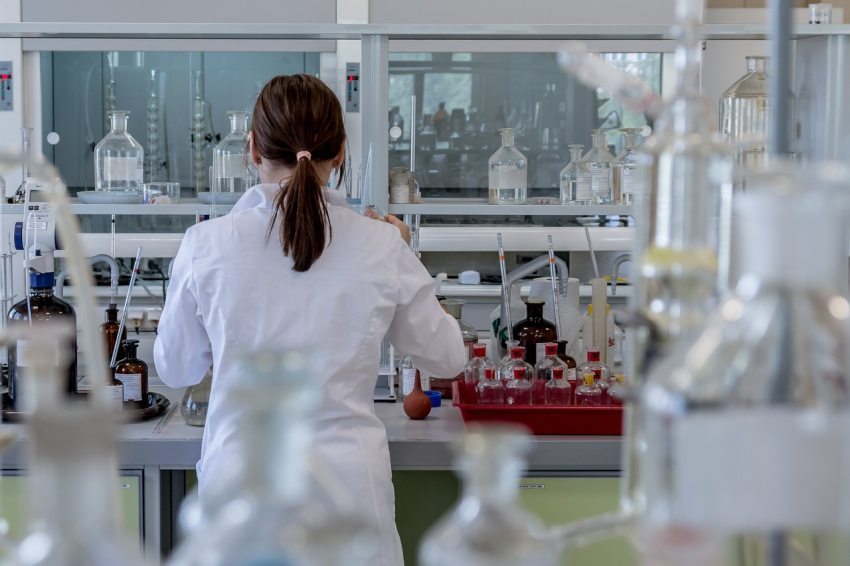
When we set up the interview, you mentioned that you had just started university. Where are you studying?
I am a first-year student at the University of Pécs Medical School. I didn't always know that I wanted to go to medical school. I originally applied to a college abroad to study chemistry and was even accepted, but I changed my mind almost at the last minute, stayed at home, and chose to study medicine.
Why did you decide to do so?
In my family, everyone has been a doctor for generations, and from an early age, I have seen the pros and cons of the profession. I spent a lot of time in the hospital with my parents.
Between two shifts, my mum would hand me over to my dad, or vice versa. I was fascinated by the atmosphere. I think it's a very beautiful profession with a lot of potential.
Research is why I was going to become a chemist, but I don't have to let it go completely, as I can do research as a physician-scientist. At the moment I think this is what I want to be.
Which area of medicine interests you most?
Radiology because of my father. When I was at high school I took part in the National Conference of Scientific Students' Societies competition. This April, there was the Carpathian Basin final, where I won the grand prize in my section with a radiology research. For about 2 years, I spent a lot of afternoons after high school in the clinic doing research, analyzing data, and even having the opportunity to talk to patients.
Now let's talk about the International Chemistry Tournament, from which your team recently came home with a gold medal, and thanks to your team, Hungary became the most successful country in the history of the competition. What do you see as the strength of the team?
This is a team event, but there is an individual aspect to it. Individual scores are recorded, but the team score always comes first. There are three roles in the competition: reporter, opponent, and reviewer. Considering them separately, all three categories were won by Hungarian students. In the end, the gold medal goes to the team with the highest overall score.
Much of our strength lies in our instructors.
I do not know of any other country where former participants return to help the new team, either as instructors, judges, or moderators.
The International Chemistry Tournament community in Hungary is a community worth belonging to, and no one wants to leave it. Dénes Buzafalvi, Bence Botlik, and Barbara Ambrus, who accompanied us this year, were also former competitors.
Six students represented Hungary at the 7th International Chemistry Tournament (IChTo) held in Guadalajara, Mexico, between 25-30 August. Hanna Járay from the Nagy Lajos Grammar School of the Cistercian Order of Pécs, Viktória Éger from the Apáczai Csere János High School and College, and Kata Erdélyi from the Fazekas Mihály Primary and Secondary Grammar School of Budapest, Fruzsina Káldy is a student of Bolyai János Practice Primary and Secondary Grammar School in Szombathely, Anna Koharek is a student of Török Ignác High School in Gödöllő, and Márton Hegedűs is a student of Reformed College Grammar School in Kecskemét. Four of them started their university studies in September. Two of them (Viktóra Éger, and Hanna Járay) are studying to become doctors, Márton Hegedűs is studying chemistry at ELTE, while Anna Koharek is studying biochemistry at Cambridge. Next year's competition will be held in Bucharest, Romania.
You come from different, geographically distant high schools, how did you get to know each other?
There is a national selection round at the ELTE Faculty of Science to select the best candidates for the competition. We met there, and then we started preparing. The tasks for IChTo were published in June, and in July we prepared for it in a camp and then at weekends at ELTE, in Budapest. It is a special characteristic of the tournament that we receive the tasks two months in advance, work on them, and then present them on the spot.
Non-conventional, open-type chemistry problems have to be solved and presented in English, according to the competition notice. What does this mean?
Theoretically, there may be an infinite number of solutions to a problem, but it is also possible that one of them is impossible to solve.
As these tasks are usually research-based, it is not only lexical knowledge that you need but also the ability to use it to solve broader problems. These are not necessarily mathematical-chemical calculation problems, but open theoretical questions. There are purely theoretical problems, which we solve using computer chemistry applications and our lexical knowledge, but also problems that we have to produce or experiment with.
Can you give an example of the latter? I ask this because it's only H2O and covalent bonds that many of us remember from our chemistry lessons.
In high school calculations, it is a common assumption that if you dissolve salt in water, the volume of the solution is unchanged, but this assumption has limitations. Some salts, such as ammonium nitrate, increase the original volume, while aluminium sulphate shrinks the overall volume of the final solution. So 50 millilitres of solution plus the salt gives less than 50 ml of solution. The task was to explain the physical limitations of this shrinkage, design a salt that provides a maximal shrinking effect on water, and support our solutions with calculations.
Sometimes a team could achieve 3-4 millimetres of extra volume contraction, other teams up to 10 or 20. This solution then needs to be defended and debated.
What does this debate look like?
After the reporter's eight-minute presentation, the opponent questions the chemical, mathematical, and physical basis of the solution, asking for evidence as to whether the solution is scientifically sound.
He/She presents the questions that arise in five minutes. This is followed by a debate, also lasting five minutes, where the reporter and the opponent discuss the solution, and then there are questions from the jury.
Who are your biggest rivals?
vious years, it was Thailand and Singapore. We lost the final to the latter in Budapest in 2022. Last year, we won in Tbilisi, Georgia. An international tournament usually attracts teams from all over the world - Hungary, Singapore, Thailand, Romania, Serbia, Vietnam, Mexico, Poland, etc. There is a rule that a country can send a maximum of two teams, but the host country can send three. This year, due to the distant location, many countries, including Hungary, were only able to send one team.
Now, surprisingly, one of the Mexican teams is our biggest opponent. Finally, before the results were announced, we were able to calculate that we had won based on the scores we had already received before the last final debate. It was a huge goal for us to defend our title this year. Especially as last year in Georgia, we set a record for final scores in the history of the tournament. We knew it would be difficult to achieve such a result again. The standard of the tournament is rising every year, and the teams and the performances are becoming more and more professional.
Nevertheless, this year we succeeded in beating our record from last year in the final. It was a euphoric experience.
What is the role of a team captain in a scientific tournament like this?
During the rounds, I officially represent our team's position, for example, I announce the number of the task we are challenging from another team. There are twelve tasks, and our team does not decide what we present, but we decide what the other team presents, which we oppose. So strategy is important in the tournament. It also depends on who we are up against.
Feedback from many countries to the international committee was that the tasks were too difficult for the standard of high school education. This is true, they are far beyond the high school level, so often we had to consult with experts to come up with a solution. For example, we had to consult experts from various international universities.
In one of my personal experiences, the task I was given at a selection round was about food chemistry in a broader sense, so I turned to the experts at the National Food Chain Safety Office for help.
The International Chemistry Tournament prepares you for real scientific life. In addition to professional development, improving your presentation skills is also a huge part of the program. I now know that this is a pillar of scientific communication. The ability to debate, search the literature effectively, and interpret publications correctly also play a key role in the tournament. We have also made new national and international contacts and friendships that would have been impossible to experience elsewhere. The whole tournament has given me a lot during high school.
Besides the professional part, what experiences did you have in Mexico?
For me, it was an indescribable experience! I had never been to another continent. Mexico is a world unlike anything I have ever experienced. The culture, the food, and the programs were all new to us as Europeans. They took us on sightseeing tours of downtown Guadalajara; we went to museums, and exhibitions. The tropical climate there was unusual, something I had only seen in movies before. But, more surprisingly, we also found many similarities. For example, we had to identify Hungarian or Mexican embroidery patterns. It surprised us, but they are extremely similar.
